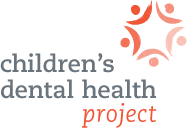The Children's Dental Health Project's blog
Tailoring care to meet every child’s oral health needs
Last week, the Centers for Medicare and Medicaid Services (CMS) issued an informational bulletin encouraging state Medicaid and Children's Health Insurance Program (CHIP) programs to ensure that their coverage and payment policies do not pose unnecessary barriers to children’s dental care.
 In part, this bulletin is a response to a 2016 CMS Office of Inspector General’s report which found that state Medicaid dental periodicity schedules were often in conflict with what the programs or their managed care plans would actually pay for. But because CDHP has long called for alignment of Medicaid and CHIP periodicity and payment policies with existing clinical guidelines for individualized care, we like to think this guidance form CMS is a product of our advocacy efforts.
In part, this bulletin is a response to a 2016 CMS Office of Inspector General’s report which found that state Medicaid dental periodicity schedules were often in conflict with what the programs or their managed care plans would actually pay for. But because CDHP has long called for alignment of Medicaid and CHIP periodicity and payment policies with existing clinical guidelines for individualized care, we like to think this guidance form CMS is a product of our advocacy efforts.
It’s probably an understatement to say that risk-based oral health care has been one of CDHP’s mantras over the years. We’ve worked with CMS and other partners to explain why changes in state policies are needed to move beyond a “one-size-fits-all” approach to preventing and managing tooth decay. That’s why we are elated that CMS is taking additional action to emphasize the importance of oral health care that is tailored to meet the needs of every child.
In short, the CMS bulletin encourages states to:
- Align fee schedules and payment policies with periodicity schedules so that children can receive the care that providers recommend, and providers can get paid to deliver it;
- Recognize that periodicity schedules are intended to establish the minimum recommended services that children should receive. They should function as a floor rather than a ceiling, and state policies should not inhibit children from getting more frequent care when needed;
- Ensure that the payment policies of managed care plans and dental contractors are aligned with the state’s periodicity schedule; and
- Look to existing clinical guidelines, like those established by the American Academy of Pediatric Dentistry and the American Academy of Pediatrics, when setting periodicity policies, especially when it comes to screenings, risk assessment, and follow-up care.
In the coming weeks, we’ll provide additional analysis of the CMS bulletin and ways in which states can take action. For some ideas on what oral health advocates can do, see this blog that CDHP staff co-authored with our colleagues at Community Catalyst. We’d love to partner with state advocates and policymakers to bring CMS’ recommendations to reality across the country. Few things bring us greater satisfaction than working with new partners to improve the lives of children and their families.
